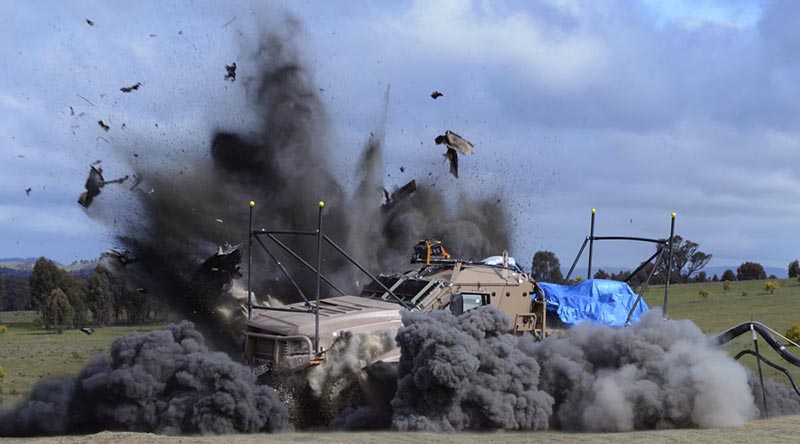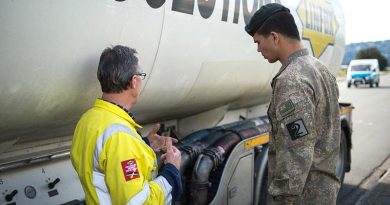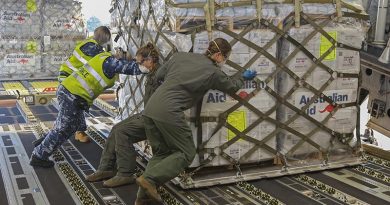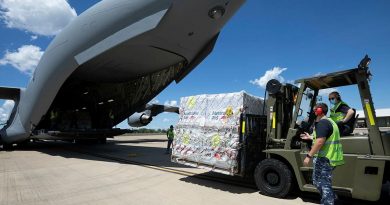How falling on your ass can help protect soldiers
Share the post "How falling on your ass can help protect soldiers"

Reducing risks posed by IEDs is an area of considerable effort for Defence Science and Technology (DST) researchers and collecting battlefield data is extremely challenging – enter civilian fall-on-pelvis data.
FILE PHOTO (2011): A Hawkei is subjected to a live-fire underbelly blast testing during trials.
Scientists, therefore, seek out alternative means of gathering information to help them design better military vehicles for our troops.
Melanie Franklyn, from DST’s Land Division, has adopted an innovative approach to investigating how extreme forces affect the human body by analysing data from hospital patients involved in serious falls.
“A fall from a height where the patient lands on the base of their pelvis generates vertical-loading conditions similar to those exerted on a soldier subjected to an underbelly blast from under their seat,” Dr Franklyn said.
“As the loading conditions are similar, and the types of injuries sustained are the same, we can use more readily available data from this civilian scenario to gain important insights into what occurs in the military context.”
A soldier travelling in an armoured vehicle that is struck by an underbelly blast is at risk of sustaining severe injuries to the pelvis and lower back that could be life-changing or even fatal.
Gaining a better understanding of the relationship between impact conditions and the tolerance supports efforts to optimise safety measures in military vehicles.
In some studies, researchers have tackled this problem by conducting experiments using cadavers, but the age of the cadavers tends to be much older than the typical Australian soldier.
An advantage of cadaveric experiments is they provide data in a controlled laboratory environment – but, subjects of advanced age have an injury tolerance that is considerably lower, on average, than that observed among young, living subjects.
Dr Franklyn has worked with experts at the Royal North Shore Hospital in Sydney to review patient medical records and analyse their data.
Analysis of the data revealed that tolerance to serious pelvic and spinal fractures was significantly higher, on average, in the younger patients than older cadavers.
This suggested that military-vehicle seat designs might be over-emphasising the need to protect soldiers from injuries to the pelvis and lower back.
“While a greater level of protection might at first seem desirable, this could have unintended consequences,” Dr Franklyn said.
“Seats designed to reduce the likelihood of less serious pelvic or spinal injuries generally require more vertical space, bringing soldiers’ heads closer to the roof of their vehicle and potentially increasing the risk of head and neck injuries.”
Researchers also assessed the likelihood of personnel sustaining injuries by conducting live-fire blast testing.
They put crash-test dummies inside armoured vehicles and blew them up to measure loading levels on different parts of the body to work out whether predetermined injury thresholds had been exceeded.
Dr Franklyn said the live-fire testing program that formed part of the LAND 121 Phase 4 selection process, in which the Hawkei prevailed, was an example of effective collaboration between multiple teams across Defence.
Her research has not only directly contributed to the enhancement of test programs for Army vehicles, but has also informed the development of a US Army blast dummy called Warrior Injury Assessment Manikin.
The findings of the hospital data study are expected to support the refinement of pelvis and spine injury tolerance curves for use by vehicle test experts in Australia and the US.
.
.
.
.
.
.

.
.
Share the post "How falling on your ass can help protect soldiers"





